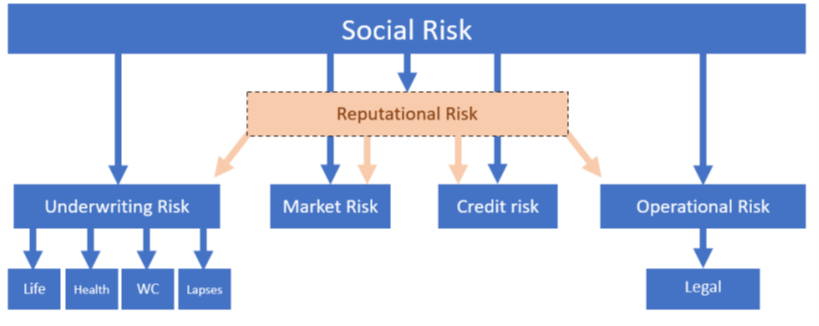Insurance companies, as long-term investors in the real economy, are particularly concerned about sustainability risks, especially those related to climate change. In this regard, the European supervisor emphasizes the importance of a risk-based approach to consider sustainability risks within a prudential framework. While there are numerous challenges (such as data access, imperfect reference frameworks and classifications, and incomplete operational implementations), these difficulties should not prevent insurance entities from addressing this significant issue.
On November 29th 2022, the EIOPA published a document providing guidance on measuring sustainability risk.
It revolves around three key aspects:
- Asset risk projection
- Underwriting risk projection
- Social risk projection
Simultaneously, in early December, the EIOPA initiated a new market discussion on the treatment of these risks. This takes the form of a survey (82 questions) with responses expected by March 5th: Prudential_Treatment_of_Sustainability_Risks Survey.
What are the projections regarding asset risks?
In its publication, the EIOPA does not consider the physical risk on investments due to a lack of data (e.g., comprehensive geographic locations of companies across different sites, company strategies to mitigate climate risks, etc.).
However, given the significant amount of research conducted on transition risk in recent years, the supervisor deems it appropriate to begin quantifying its effects on the need for economic capital, if not already done so.
Based on current knowledge and available data, the EIOPA identifies equities, bonds, and real estate as the main asset classes affected by sustainability.
Recognizing that the use of existing market indices does not currently provide sufficient information to evaluate sustainability risk, the EIOPA proposes two alternative asset classification approaches based on their risk exposure:
- Sector-based: Based on a company’s economic activities
- Environmental-based: Based on specific environmental variables relevant to the company, such as greenhouse gas emissions levels
The document also opens the discussion on data that can aid in calibrating these approaches. For example, in the case of real estate, evaluating the energy performance of buildings (e.g., Energy Performance Certificate in France) could be considered.
What are the projections regarding underwriting risks?
The focus is on prevention. It is considered that the insurance industry should contribute to helping companies and economies adapt to climate change by modifying their underwriting practices. For instance, the presence of flood-resistant doors or walls could reduce the cost of insurance policies.
The EIOPA also seeks market input on the evolution of the Standard Formula. Data will be collected in the second quarter of 2023 to measure the impact on premium risk. A qualitative analysis will also be conducted to assess the impacts on provisioning and catastrophe risks.
What are the projections regarding social risks?
It would be relevant to integrate social risks into Pillar 1, but how should they be modeled? The diversity of social risks also makes it difficult to estimate all possible impacts comprehensively.

One natural idea would be to rely on the existing prudential framework, but not all underlying concepts can be applied to social risks. Moreover, it is challenging to conceive representative and exhaustive scenarios for measuring this type of risk.
In the absence of Pillar 1, the EIOPA proposes integrating social risks into Pillar 2 through governance and risk management, and into Pillar 3 through reporting and communication requirements.
If you would like to learn more about translating climate risks into prudential risks, our experts are also available to provide further insights.
This article was written by our experts:

Thibaut GILLIARD
Director, Deputy Head of Modeling & Finance

Romain NOBIS
Senior Consultant Modeling & Risk

Annabelle GARIGUE
Senior Manager Modeling & Risk

